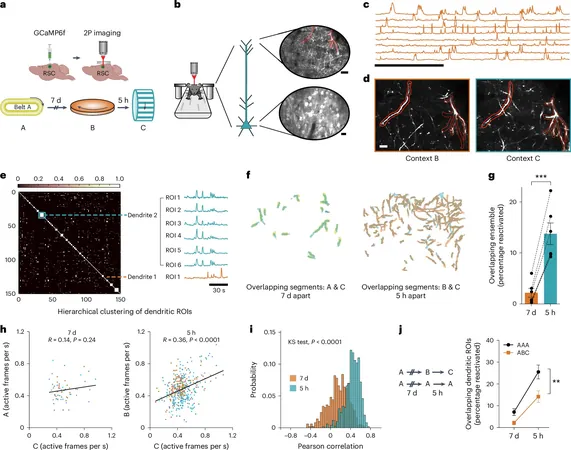
Revolutionary Small-Pore Aluminophosphate Molecular Sieve DNL-17: A Game Changer in Selective Adsorption and Energy Storage
2025-03-11
Author: Siti
Introduction
In a groundbreaking development in material science, researchers have successfully synthesized a small-pore aluminophosphate (AlPO) molecular sieve known as DNL-17, marking a significant advancement in the field of selective adsorption and energy storage technologies.
Aluminophosphate Molecular Sieves
Aluminophosphate molecular sieves are crystalline microporous materials formed by the precise arrangement of phosphate (PO4) tetrahedra and aluminum (AlO4) tetrahedra, resulting in unique channel systems and cage-like structures. Among these, small-pore AlPO molecular sieves with intricate three-dimensional (3D) channel networks have gained attention for their potential applications in efficiently separating gases and storing energy.
Research Study Overview
The recent study, published in the esteemed Journal of the American Chemical Society, was spearheaded by a team of researchers from the Dalian Institute of Chemical Physics, affiliated with the Chinese Academy of Sciences, under the leadership of Prof. Guo Peng and Prof. Liu Zhongmin. By employing a flexible diquaternary ammonium compound as an organic structure-directing agent (OSDA), the research team successfully synthesized DNL-17, a novel small-pore AlPO molecular sieve.
Crystallographic Structure of DNL-17
Utilizing advanced 3D electron diffraction (ED) technology, the researchers were able to unveil the complex crystallographic structure of DNL-17. This innovative molecular sieve is characterized by 3D channel systems featuring 8 * 8 * 8-ring pores and a framework that encompasses four distinct types of cages: dodecahedral (d6r), cancrinite (can), erionite (eri), and chabazite (cha). Furthermore, the unique stacking sequence of 24 layers along the c-axis (AABAACAABBCBBABBCCACCBCC) is an exciting highlight of this new material.
Unique Structure-Directing Effects
An intriguing aspect of the research is the identification of a unique structure-directing effect. The flexible OSDAs exhibited diverse conformations to stabilize various cages during the crystallization process. This flexibility not only facilitates the synthesis of complex structures but also demonstrates the immense potential of DNL-17 for the selective separation of n-butane and isobutane, crucial in petrochemical processes.
Implications of the Findings
Prof. Guo emphasized the implications of this study, stating, "Our findings illustrate that OSDAs can construct novel AlPO molecular sieves through adapting to different conformations, which opens up new avenues for designing and synthesizing innovative molecular sieves with tailored properties."
Conclusion
The successful synthesis of DNL-17 reaffirms the importance of molecular sieves in various industries, from gas separation to energy management, and underscores the ongoing quest for advanced materials that can revolutionize technology. As researchers continue to explore the adaptation of organic structure-directing agents, the future of molecular sieves looks exceptionally promising, unlocking the potential for more efficient and sustainable solutions worldwide.




 Brasil (PT)
Brasil (PT)
 Canada (EN)
Canada (EN)
 Chile (ES)
Chile (ES)
 Česko (CS)
Česko (CS)
 대한민국 (KO)
대한민국 (KO)
 España (ES)
España (ES)
 France (FR)
France (FR)
 Hong Kong (EN)
Hong Kong (EN)
 Italia (IT)
Italia (IT)
 日本 (JA)
日本 (JA)
 Magyarország (HU)
Magyarország (HU)
 Norge (NO)
Norge (NO)
 Polska (PL)
Polska (PL)
 Schweiz (DE)
Schweiz (DE)
 Singapore (EN)
Singapore (EN)
 Sverige (SV)
Sverige (SV)
 Suomi (FI)
Suomi (FI)
 Türkiye (TR)
Türkiye (TR)
 الإمارات العربية المتحدة (AR)
الإمارات العربية المتحدة (AR)